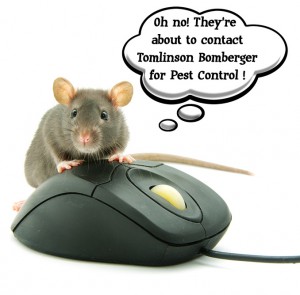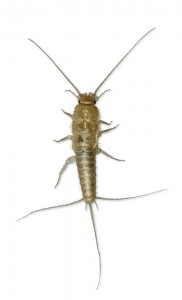Winter may not be a time of year that people equate to dealing with pests in their home. But the truth is, your home has everything you and pests need to survive and thrive: shelter, food, and water. As temperatures start to descend through the fall and into the winter, pests are planning ahead. They seek out a place to overwinter and endure the long, cold season. Let’s learn about a few of these unwanted winter house guests.
3 Common Winter Pests
Mice
 The word “mouse” comes from an ancient Sanskrit word (musha), which means to steal; stealing is exactly what mice do. They move in without asking permission – how rude! They scrounge up nesting material from insulation, dryer lint, furniture foam, or any other suitable products. Mice live in wall voids, behind stored items, in or under cabinets, in your pantry, above drop ceilings, and even under the hood of vehicles parked in your garage.
The word “mouse” comes from an ancient Sanskrit word (musha), which means to steal; stealing is exactly what mice do. They move in without asking permission – how rude! They scrounge up nesting material from insulation, dryer lint, furniture foam, or any other suitable products. Mice live in wall voids, behind stored items, in or under cabinets, in your pantry, above drop ceilings, and even under the hood of vehicles parked in your garage.
They feed on food you bought with your hard earned money and then leave 30 to 50 droppings and 300 plus micro-droplets of urine anywhere and everywhere they travel in a 24 hour period. Mice reproduce very quickly; a female mouse can have eight litters in her short life span, which is often less than a year. She is capable of giving birth to a litter every 24 to 28 days. Young mice are sexually mature within 5 to 8 weeks. Professional mouse control methods can incorporate identifying and or sealing access points, mechanical traps, snap traps, glueboards, and tamper resistant bait stations.
Centipedes
 Centipedes are a pest that is very high on the list of bugs people hate because of their size, speed, and “creepy crawly” impact. They are most often found living outdoors. But, when residing near a home’s foundation they can come inside seeking shelter, warmth, or a tasty meal. They feed on insects and spiders. In spite of that, homeowners are not likely to want to have them around their property. Larger centipedes have the ability to bite, but ironically not with their mouth parts. The front legs appear and function like jaws, and do in fact contain venom glands. Centipede bites are usually not serious, but an over the counter antiseptic should be used on the wound, and a doctor consulted if the skin is broken.
Centipedes are a pest that is very high on the list of bugs people hate because of their size, speed, and “creepy crawly” impact. They are most often found living outdoors. But, when residing near a home’s foundation they can come inside seeking shelter, warmth, or a tasty meal. They feed on insects and spiders. In spite of that, homeowners are not likely to want to have them around their property. Larger centipedes have the ability to bite, but ironically not with their mouth parts. The front legs appear and function like jaws, and do in fact contain venom glands. Centipede bites are usually not serious, but an over the counter antiseptic should be used on the wound, and a doctor consulted if the skin is broken.
Ongoing centipede problems should first be addressed by eliminating harborage areas such as piles of rocks, trash, boards, or other debris that is close to the exterior foundation. Exclusion, or the sealing up of cracks or voids providing access can often be effective to lessen or eliminate centipedes finding their way in. Residual insecticides can be applied in cracks and crevices or as spot treatments in areas where centipedes may hide.
Silverfish
 Silverfish: their name essentially reveals their appearance: silver in color and shaped somewhat like a fish. They have the ability to live indoors or outdoors, but often go unnoticed around the exterior. These pests are commonly found inside especially during the colder months when people are spending more time indoors. Silverfish can be found almost anywhere inside the house, but are often found in high moisture areas close to a food source. They lay their eggs in protected areas such as behind baseboards, and they hatch in about 30 days, depending on moisture and temperature conditions.
Silverfish: their name essentially reveals their appearance: silver in color and shaped somewhat like a fish. They have the ability to live indoors or outdoors, but often go unnoticed around the exterior. These pests are commonly found inside especially during the colder months when people are spending more time indoors. Silverfish can be found almost anywhere inside the house, but are often found in high moisture areas close to a food source. They lay their eggs in protected areas such as behind baseboards, and they hatch in about 30 days, depending on moisture and temperature conditions.
Silverfish can eat a variety of foods including oats, flour, paper, starch, glue, paste, textiles, and dead insects. They can do considerable damage to some natural and synthetic fibers, books, magazines, and other paper products. Applying residual insecticides labelled for silverfish is the best way to control them. Basements, attics, closets, behind baseboards, under bathroom fixtures, and around water pipes are the best places to treat.
Contact A Pest Control Professional Today
 These pests and others can be addressed by contacting your local Pest Control Professional. They have the training, experience, certifications and licenses, application equipment, and the most effective materials to keep your warm and cozy home as pest and worry free as possible this winter.
These pests and others can be addressed by contacting your local Pest Control Professional. They have the training, experience, certifications and licenses, application equipment, and the most effective materials to keep your warm and cozy home as pest and worry free as possible this winter.

